High fibre diet: lose weight with these high fibre foods
A low-fat diet that's high in fibre can help you lose weight and prevent piles and constipation too! We'll help you introduce more fibre into your diet and tell you which foods to eat like nuts and baked beans
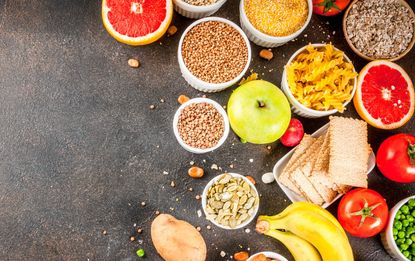

A high fibre diet has lots of health benefits and can even help you to lose weight, if that’s your goal. We’ve put together a handy guide featuring everything you need to know about following a high fibre diet.
A high fibre diet comes with a higher number of health benefits, starting with your digestive system as it's one of the diets that work fast to produce good results. And unlike a low fibre diet, it get things moving more quickly and allow your body to absorb the nutrients it needs.
Harley Street nutritionist Lily Soutter says, “On average, most of us within the UK simply aren’t reaching our daily-recommended fibre intake. Fibre plays a key role with supporting digestive health, reducing weight gain, and keeping our gut lining healthy by feeding our good bacteria. What’s more, fibre can reduce the risk of cardiovascular disease, type 2 diabetes and even bowel cancer!”
High fibre foods are part of all the healthiest diets in the world, but it turns out many of us aren’t getting enough fibre in our diets, as a study by PubMed showed. On average we’re only consuming 18g out of our recommended intake of 30g per day.
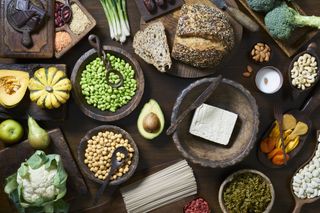
What is a high fibre diet?
You might’ve heard the term ‘high fibre’ thrown around a lot, but what does it actually mean? Fibre is a substance found in the cell walls of plants and is essential for keeping us healthy. It is important for our digestive health and regular bowel movements, and helps us to feel fuller for longer.
A high fibre diet is one rich in fibrous foods and low in foods that contain no fibre at all such as meat. Fibre foods tend to be naturally low-fat and fill you up, and can even help to improve cholesterol and blood sugar levels.
The good news is that fibre can be found in lots of foods for breakfast, lunch and dinner, as well as many snacks. So it shouldn’t be too difficult to incorporate lots of fibre-rich foods into your regular diet.
GoodtoKnow Newsletter
Parenting advice, hot topics, best buys and family finance tips delivered straight to your inbox.
How does a high fibre diet work?
When fibre, or roughage as it's sometimes called, passes through our bowel, it absorbs water and bulks up the waste matter. This makes it easier for our bodies to get rid of the waste, keeping our bowels moving.
Fibre also feeds our gut bacteria, which is another key benefit for following a diet that’s high in fibre. So not only does it help with bowel movements, it can also help our gut bacteria to support our overall health.
Lily explains, “Did you know that we have more gut bacteria than skin cells on our body? We have a symbiotic relationship with our gut bacteria, they need a place to live, eat and reproduce and in turn their metabolic activity supports our own health in multiple ways.
“This means that our diet also feeds our gut bacteria. Since fibre is the primary source of fuel for our healthy gut bacteria, a diet rich in wholegrains, fruit, vegetables, nuts and seeds also helps our bacteria to flourish and grow.”
Why is a high fibre diet good for?
A high fibre diet can help if you suffer from constipation or other bowel problems such as Irritable Bowel Syndrome, due to the way it aids digestion. But it's also good for preventing a variety of other conditions too from piles, to heart disease and even bowel and breast cancer. However, if you're really struggling with IBS, you may want to opt for a low FODMAP diet to help alleviate those unpleasant symptoms.
Many of us associate a high fibre diet with aiding the digestive system, and Lily agrees that this is a huge benefit when following this diet plan. Constipation is actually a very common problem. Lily reveals, “Whilst we may not all talk about it, constipation is one of the most common digestive complaints in Europe! In fact, it has been estimated that it affects 5-35% of the general population depending on the definition of criteria used. “Although the cause of constipation can be variable, dietary fibre has been shown to play a clear role in prevention by bulking up stools and making them softer and easier to pass through the digestive tract.”
In general, foods that are full of fibre are also low in fat and full of vitamins, minerals and other nutrients. For example, pulses contain iron and calcium too, so it’s a great way to get more vitamins into your diet.
Lily adds, “Did you know that our healthy gut bacteria ferment fibre and in turn produce vitamins K, B1, B2, B6, B9 and even some B12! Vitamin K is needed for bone health whilst B vitamins play a role with converting the food we eat into energy.”
What are the symptoms of Fibre deficiency?
You might be interested in following a high fibre diet because you suspect you have a deficiency. If you have any medical concerns you should speak to a GP as soon as possible, but there are some key symptoms to look out for.
Symptoms of fibre deficiency include constipation, diarrhoea, bloating, high cholesterol or blood pressure and feeling hungry after a meal. If you're finding yourself feeling hungry quickly, or you're having issues with your stomach, there's a chance you may not be getting enough fibre.
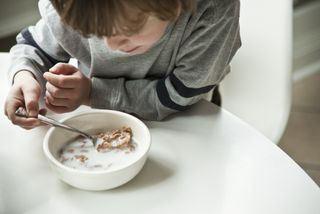
How much fibre do children need?
Children don’t need to have as much fibre as adults, but it’s still important to try and incorporate it into their diets. Government guidelines state that children between the ages of 2-5 should aim for 15g a day, 5-11 year olds should aim for 20g per day, and 11-16 year olds should aim for 25g a day.
Popular children’s foods high in fibre include beans, high-fibre cereals, wholegrain sandwiches, and raspberries. You should also ensure they’re drinking plenty of fluids if you’re upping fibre intake.
What are the drawbacks of a high fibre diet?
You might find that suddenly upping your fibre intake will make you bloated, full of wind and even constipated, which is both uncomfortable and quite embarrassing. That's why it's important to introduce more fibre gradually. You can start by swapping your white bread for brown or your cornflakes for Shredded Wheat, rather than trying to change everything at once.
Lily advises, "In order for fibre to have the best effects in preventing constipation, intake should be increased gradually and should be accompanied by an increase in fluid intake."
What do you do on a high fibre diet?
Avoid eating too much meat as this contains no fibre at all. Instead, try to eat foods full of natural fibre such as fruit and veg, nuts, seeds and pulses. High fibre diets are a great choice for those wanting to cut down on meat and follow more of a plant-based diet.
Whilst fish has other benefits like omega-3 fatty acids, it also contains no fibre just like meat. So if you are looking to eat more fibre, your best bet is to load up on your fruit, veg and pulses when planning meals. When it comes to cereal-based foods, such as bread, pasta and actual breakfast cereals, the amount of fibre depends on how much the outer layer of the grain has been stripped away.
In general, the more processed food is, the less fibre it will contain. That's why you should go for brown bread and rice, not white. Wholemeal pasta is better than the bleached, white type and when you buy cereal, look out for 'wholegrain' brands like Shreddies and Shredded Wheat.

Can you follow a high fibre diet on a budget?
Following a diet plan doesn’t have to be costly, so if you’re worried about budgeting, Lily has put together some handy tips to help you up your fibre intake without breaking the bank.
First of all, Lily recommends incorporating Ryvita crispbreads into your diet. They have a RRP of just £1.19 per pack, and contain a lot of your recommended daily fibre.
She says, “Did you know that Ryvita Multigrain Crunchy Crispbread provides a whopping 18.3g fibre per 100g! Enjoy 4 crispbreads with your lunch and you can easily consume one third of your daily fibre intake.”
They’re also a worthwhile purchase because of how versatile they are. Crispbreads can go with savoury or sweet dishes and can be had at any meal or snack. Lily recommends topping them with hummus and roast tomatoes, or honey & sliced figs for a sweet option.
If you usually buy potatoes with your weekly shop, there’s a clever way to get more fibre into your diet by simply leaving the skin on them when you cook. Lily explains, “If the first thing you do before cooking is peel off the potato skin, then you’re not alone. Leaving the skin on your potato not only adds a huge fibre boost, but also helps to retain some of the nutrients in the potato whilst cooking.”
Jacket potatoes are an excellent way to get fibre into your diet, and you can choose lots of healthy fillings for them!
You can also try adding fruit like apple and pear to your desserts, “Just one medium pear comes with 6g fibre, whilst 1 medium apple provides 4.5g!”
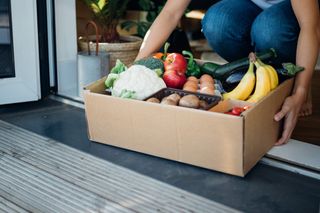
Soluble versus insoluble fibre
There are two different types of fibre, soluble and insoluble. They’re categorized into two sections based on whether or not the fibre dissolves in water or not.
Explaining the difference, Lily says, “Soluble fibre dissolves in water and creates a gel that may help to reduce blood cholesterol and improves glucose control. Soluble fibre is found in foods such as fruit and oats.
“Insoluble fibre doesn’t dissolve in water but attracts water into your stool, making it softer and easier to pass. Insoluble fibre is found in foods such as whole grains and nuts.”
- Good sources of soluble fibre: oats, nuts, seeds, beans, apples and berries.
- Good sources of insoluble fibre: brown rice, wheat bran, rye, spelt, fruits and vegetable
High fibre foods
Fibre is found in a huge number of natural foods such as fruit, veg, nuts, seeds and pulses so any of these will help up your fibre intake. Jacket potatoes in their skins and baked beans are great sources of fibre too.
Fibre can be enjoyed as part of a balanced diet and it can play a part in every meal we eat, including snacks. It doesn’t have to be boring either, as plenty of our favourite foods contain fibre.
Below we’ve put together some great sources of fibre, and what a typical meal plan on a high fibre diet could look like.
- Pears
- Apples
- Raspberries
- Strawberries
- Bananas
- Avocados
- Carrots
- Broccoli
- Split peas
- Artichoke
- Brussel sprouts
- Sweet potatoes
- Popcorn
- Almonds
A typical day on a high fibre diet
To help you get started, Lily has put together a typical day on a high fibre diet and how much grams you’ll get in each serving. With many of us not getting enough in our diet, this is a good guide to see the easy ways you can add more fibre into your diet.

Breakfast - Beans on Toast 9.4g fibre per serving
Start your day with a slice of wholegrain bread and no added sugar beans, and you will have reached a third of your recommended fibre intake before 9am! What’s not to like?
Lunch - Roasted Tomato & Hummus on Ryvita Multigrain Crunchy Crisp Bread 14g fibre per serving
This takes 5 minutes to prep and can make a perfect lunch or snack option for long-lasting energy. What’s more Ryvita Multigrain Crunchy Crisp Bread are a powerhouse of fibre, providing as much as much as 18.3g fibre per 100g!
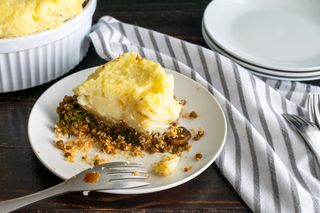
Dinner - Plant based cottage pie 19g fibre per serving
Why not try cottage pie with a healthy twist? We could all do with more colour as well as plants within the diet, and this comforting option certainly doesn’t compromise on flavour. Cheap to make and two-thirds of your daily recommended fibre intake! In this recipe you swap mince with sweet potato and lentils, and it's just as delicious.
High fibre diet
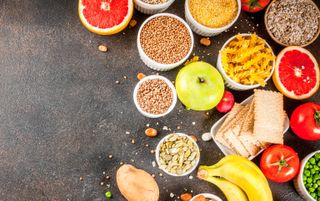
Eating a high fibre diet will have you feeling slimmer and healthier than ever, with a stronger digestive system.

Lucy Buglass is a Digital Writer for What's on TV, Goodto.com, and Woman&Home. After finishing her degree in Film Studies at Oxford Brookes University she moved to London to begin her career. She's passionate about entertainment and spends most of her free time watching Netflix series, BBC dramas, or going to the cinema to catch the latest film releases.
-
 Psychologist explains how 'eggshell parenting' is an 'unsafe' strategy leading to lifelong damage to kids - these are the 9 signs to look out for
Psychologist explains how 'eggshell parenting' is an 'unsafe' strategy leading to lifelong damage to kids - these are the 9 signs to look out forEggshell parenting is the latest term coined by a psychologist, and it's potentially very damaging. Find out everything you need to know about it, and what the expert is saying.
By Lucy Wigley Published
-
 What is a Toniebox? Find out with our guide to all things Tonies
What is a Toniebox? Find out with our guide to all things ToniesNot sure what a Toniebox is or how it works? Here's everything you need to know before you buy one for your child
By Sarah Handley Published